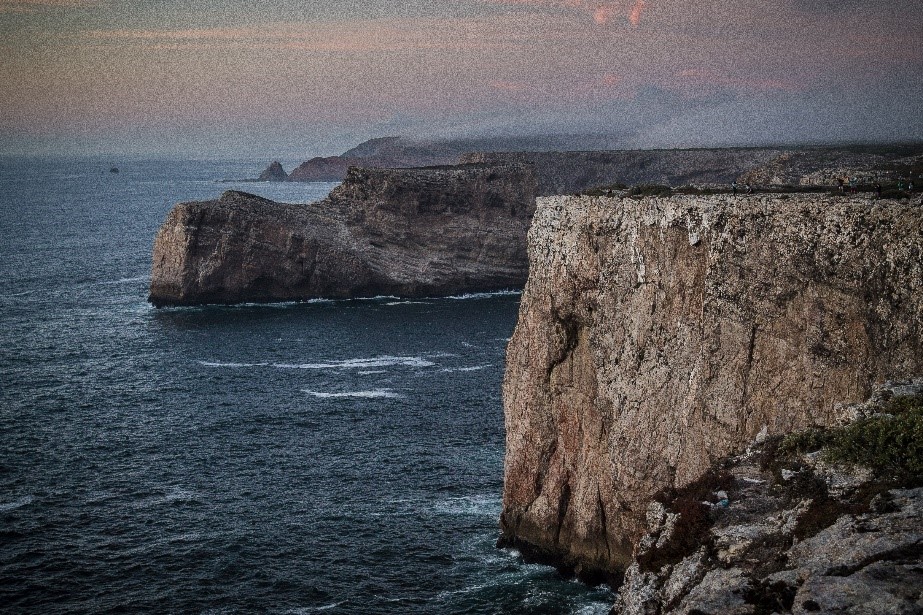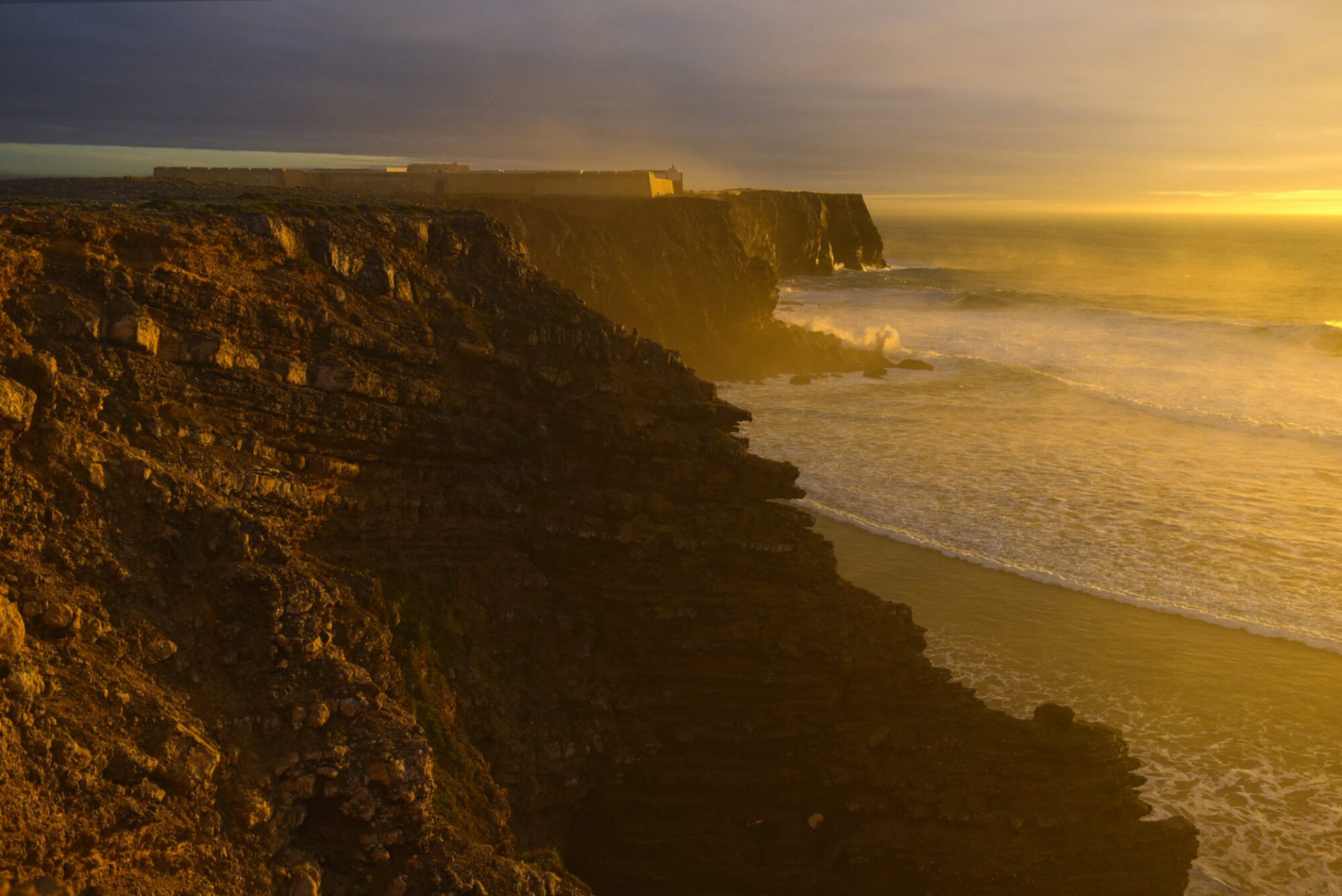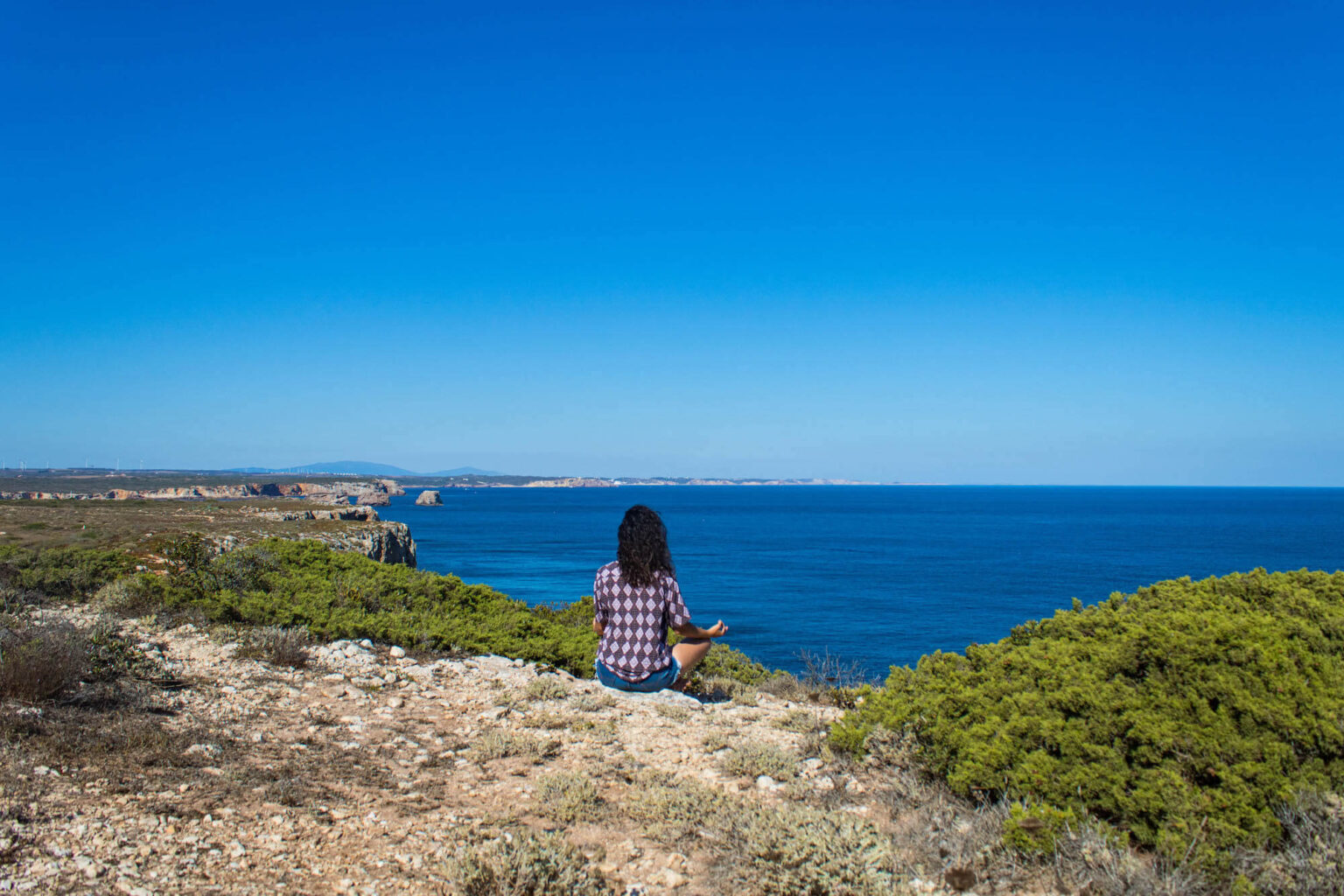
Sagres, a colourful paradise to discover leaving the sea behind
At first glance, one may think Sagres is a dry area where no plant would survive, and with so many stunning landscapes from the different doors open to the Atlantic Ocean, it seems almost ridiculous to ask for more from the small village of Sagres. But the biodiversity here is huge, from birds and insects to an immense variety of plants.
Its location, variety of landscapes and climate, influenced by the Atlantic Ocean and the Mediterranean Sea, are part of the equation leading to this unexpected and beautiful result.
Although surrounded by the Atlantic Ocean, Sagres is one of the few places whose vegetation and climate are Mediterranean. In fact, the coast between the Sagres promontory and the Cape St. Vincent, with cliffs, dunes, marshes and lagoons, is kind of a unique habitat on Earth.
Cape St. Vincent is the place in Portugal with the largest number of endemic plants. If you walk there, you will be surprised by so many different species of wildlife, wildflowers and fungi.
Even the iconic Sagres promontory (Fortress), which can be reached by a 25-minute-walk from Sagres Sun Stay, shelters species that can’t be found in any other place on Earth, such as the Biscutella vicentina, the Diplotaxis vicentina, and the Hyacinthoides vicentina.
To survive in harsh conditions, with water scarcity, shallow soils and the sea salt sent by the wind, many species had to adapt to survive. Therefore, species that would be trees elsewhere became bushes here.
The region was designated a Biogenetic Reserve by the Council of Europe in 1988, and it is a paradise for botanists, due to rare plants growing in calcareous soils too. Furthermore, some species thought to be extinct were rediscovered here.
You would rather visit the area in the fall or late winter/spring, if you want to explore the best explosions of colours that Sagres can paint for you. It is also in autumn when the mastic tree bears fruit. Its berries are so aromatic that they are used for many purposes, such as chewing gum. Birds don’t miss this season too, and while they find the best berries to eat, they benefit the local flora by spreading seeds.
While searching for an exceptional and diverse botanical experience, you will be delighted, for instance, by the beautiful pinks and shapes of the Silene rothmaleri.
Another endemic species that will make you smile is the Cistus palhinhae because it seems to have a small sun inside it. Usually this plant is found with Cytinus hypocistis growing in the sandy coastal strip.
Beside the road connecting Sagres to the Cape St. Vincent, try to find the shrub mentioned as a reclining sheep and the Shrubby Violet Viola arborescens, one of the rare endemic plants.
There are plenty of other plants with a distribution restricted to the southwest coast of the country, which you won’t miss in Sagres, such as the stunning and endangered Linaria algarviana, the purple Bellevalia hackelii, the Herniaria algarvica, the Teucrium vicentinum and the thyme Thymus camphoratus.
Among the large number of different species of Cistus that clothe Algarve from April onwards, you may contemplate the Cistus ladanifer subsp. Sulcatus, which is a rockrose also restrictively distributed here. Did you know that rockroses release an aromatic resin so powerful that it is used in perfumes and as a sedative?
In this fascinating place so precious among people passionate about nature, there are also species that exist only in the Southwest Alentejo Natural Park, Portugal and the Iberian Peninsula.
Cape St. Vincent is one of the best places to find plenty of Fritillaria lusitanica with purple flowers, even though you will have to be careful to not get hurt by the prickly plants there.
We can also find green meadows with flowers in the region. The bushes are rich in thyme, hyacinths, hyacinths, southern gorse, heathers, thistles and Lithodora lusitanica.
If you accept our challenge, take your camera, and at the end of your stay share with other guests how many different species of plants you managed to find in Sagres. They will be tempted to beat your record! The more people talk about the local plants, the merrier for their preservation.
To see more pictures of the area’s fauna and flora, follow us on Instagram!





